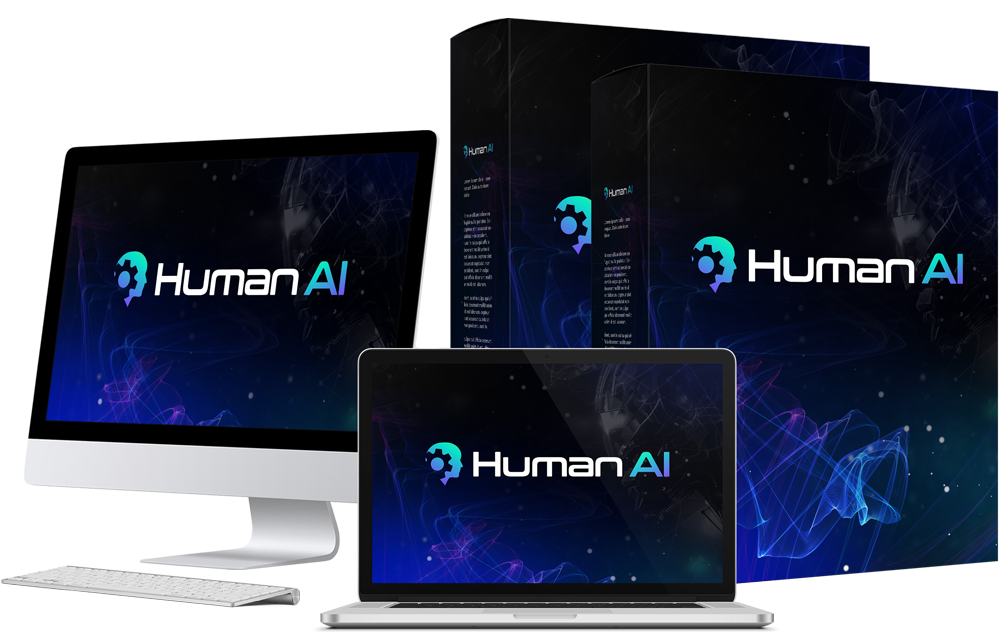Remember when talking to a brand was hard? You had to go through many menus or wait on hold. Now, AI-powered virtual humans have changed that. They make talking to brands easy and personal.
These digital avatars connect people with brands in a new way. They help businesses talk to customers better. This leads to more sales and growth.
This article explores how AI-powered virtual humans work. We’ll look at the first AI operator and its role. As AI gets better, knowing its impact on marketing and business is key.
Let’s see how these virtual humans are changing how brands talk to people. They’re making customer service better and helping businesses grow.
Key Takeaways
- AI-powered virtual humans redefine customer engagement.
- Interactive AI enhances user experience and satisfaction.
- The world’s first AI operator exemplifies innovation in digital interaction.
- Artificial intelligence can streamline communication and conversion processes.
- Understanding this technology is essential for future business strategies.
Understanding AI Technology and Its Impact on Engagement
AI technology has changed how we interact online in recent years. It has grown from simple algorithms to complex systems using machine learning and neural networks. This growth helps improve how we engage with digital content.
AI’s ability to create personalized experiences is fascinating. It uses data and user behavior to make interactions more effective. This personal touch strengthens the bond between brands and customers, boosting engagement.
Studies show a big increase in engagement when businesses use AI. These findings show AI doesn’t just increase interaction but also builds customer loyalty. As we delve into AI’s impact, it’s clear that using it well is key for businesses to succeed.
What Are AI-Powered Virtual Humans?
AI-powered virtual humans are a big step forward in digital interaction. They are made to act like humans, making interactions feel real and natural. These digital beings use interactive AI systems to talk to users, share info, and even seem to understand emotions.
At their heart, AI-powered virtual humans can understand and respond to natural language and emotions. This tech makes conversations between people and digital beings smooth and personal. They can be found on websites, social media, or in customer service, making interactions more engaging and tailored to what users need.

Also, digital humans work on many platforms, giving users a consistent experience. This is key in today’s fast-paced digital world, where people want quick and personal answers. As more companies use these AI systems, we see better engagement and happier users.
The World’s First AI “Operator” That Creates “AI Humans” That Talk and Interact
The world’s first AI operator is a big step in technology. These AI humans can talk and interact with users like real people. They use advanced algorithms and neural networks to understand and respond to users.
How This Technology Works
This tech uses machine learning to understand language and context. Natural Language Processing (NLP) helps AI humans get what users mean. When a user asks a question, the AI operator gives a fitting answer.
Voice recognition and synthesis make these interactions feel real. This makes talking to AI humans feel natural.
Real-World Applications of AI Humans
AI humans are used in many fields, like retail, healthcare, and entertainment. For example:
- Retail: Virtual sales assistants help customers find what they need and check out.
- Healthcare: AI humans offer virtual consultations, making healthcare easier to access.
- Entertainment: Interactive AI characters make video games and immersive experiences more engaging.

Virtual humans are changing how we interact in different areas. They make communication better, improve customer service, and create lasting memories. This shows how groundbreaking this technology is.
| Industry | Application | Benefit |
|---|---|---|
| Retail | Virtual Sales Assistants | Enhanced customer support |
| Healthcare | Virtual Consultations | Increased accessibility |
| Entertainment | Interactive AI Characters | Immersive user experiences |
The Role of Conversational AI in User Engagement
Using conversational AI in business strategies is a new way to improve user engagement. This tech helps brands and customers have real talks. It’s a great tool to change how users act.
Chatbots and voice assistants help companies make better customer experiences. They answer questions fast, making things smooth. It’s cool how AI learns what users like, making talks feel real.

Studies show brands with conversational AI get happier customers. These tools answer common questions and give personal tips. This makes users want to talk to the brand more, boosting engagement.
| Feature | Traditional Support | Conversational AI |
|---|---|---|
| Response Time | Minutes to Hours | Instant |
| User Interaction | Limited | Dynamic and Continuous |
| Cost Efficiency | High | Lower |
| Scalability | Difficult | Easy |
I think using conversational AI is more than a trend. It’s a big change towards better and more efficient talks with users. As companies keep using this tech, the effect on user engagement will grow.
Benefits of Using Virtual Humans in Business Strategies
Using virtual humans in business brings big wins. It makes operations smoother and improves how we talk to customers. These digital friends boost engagement and make customer service better.
Increased Engagement Rates
Virtual humans are great at getting people involved. Studies show they make customers more active. Here’s why:
- They’re always ready to help, day or night.
- They talk like people, making chats feel real.
- They know you, making every chat special.
This means more people talking to your business. It leads to more sales and growth.
Enhanced Customer Experience
Virtual humans change how we help customers. They offer quick answers and advice just for you. Customers love:
- Fast help with their problems.
- Advice that fits their needs.
- Help that’s always there, no matter where they are.
This makes customers stick with your business. It shows how AI can make service better. It’s a big step up in connecting with people.

| Benefit | Impact on Business |
|---|---|
| Increased Engagement | Higher lead conversions and improved customer loyalty |
| Enhanced Customer Experience | Positive feedback and better customer satisfaction ratings |
| 24/7 Availability | Increased operational efficiency and reduced response times |
| Personalized Interactions | Deeper customer connections and trust |
Comparing Traditional Methods to Interactive AI
When looking at how to engage with customers, the gap between old ways and new AI is clear. Old methods use static chatbots or human help, which can be slow and limited. For instance, chatbots might not get complex questions right, and humans are only available for so long. This can make the customer experience less smooth.
Interactive AI, however, changes the game. It’s always ready to help and works around the clock. This means businesses can meet customer needs faster and better. It also offers a personal touch that old methods often lack. Customers like talking to AI that gets them and answers quickly.
To show the differences, I made a table:
| Criteria | Traditional Methods | Interactive AI |
|---|---|---|
| Availability | Limited to business hours | 24/7 availability |
| Scalability | Difficult to scale | Seamlessly scalable |
| Response Speed | Variable, often slow | Instantaneous |
| Personalization | Basic, often generic | Highly personalized experience |
Looking at AI, it’s clear that new AI is better at learning and improving. This makes customers happier and more likely to stay. For businesses wanting to do better, interactive AI is a smart choice.

Case Studies: Successful Implementation of Digital Humans
In today’s fast-changing market, many brands are looking at case studies. These studies show how AI avatars improve customer experience. Companies like Sephora and Vodafone have used these digital beings to change their customer service.
Examples of Brands Using AI Avatars
Sephora lets customers get personalized beauty advice from AI avatars. This makes customer interactions better and boosts satisfaction. Vodafone also uses AI avatars for customer support, offering quick help through chat.
Metrics That Matter: Measuring Success
Success in these case studies is measured in different ways. Customer feedback shows how happy people are. Engagement rates show how often people use AI avatars. And ROI shows the financial gain from using them.
| Brand | Application | Key Metrics |
|---|---|---|
| Sephora | Personalized beauty consultations | High satisfaction rates, increased return visits |
| Vodafone | Customer support with interactive chat | Improved engagement rates, reduced response times |
Challenges and Limitations of AI Humans
AI humans bring many benefits to businesses, but they also face several challenges. It’s important to understand these issues to use AI well. This knowledge helps any company that wants to make the most of AI.
One big problem is the risk of miscommunication. AI is smart, but it can miss the subtleties of language. This can cause misunderstandings, making AI less useful.
Another issue is how well AI performs. Its success depends on its training and the situation it’s in. During busy times, AI might be slow. This can upset users and hurt the experience.
There are also big concerns about data privacy and AI bias. It’s key that AI works fairly and openly. Companies must follow rules and keep users’ trust. AI bias can unfairly affect people, so it’s vital to watch over AI closely.
To sum up, tackling these AI challenges is crucial for better AI use. Improving AI, listening to users, and being ethical are key steps. These actions can help solve these problems and lead to more effective AI interactions.
Future Trends in AI Technology and Virtual Interaction
The world of AI and virtual interaction is changing fast. New trends are coming that will change how businesses talk to their customers. Emotional intelligence in AI is key. It lets AI systems understand and respond to our feelings, making connections feel real.
Augmented reality is also a big deal. It combines AI with AR to create amazing experiences. This mix will change how we interact with brands, making digital change a must.
People want experiences that feel made just for them. They want content that speaks to their interests and needs. AI helps by analyzing what we like and how we behave, making interactions better.
Research shows that companies that keep up with these trends will stay ahead. Keeping up with AI and innovation helps businesses succeed in a fast-changing world.
Conclusion
Reflecting on AI technology, it’s clear that virtual humans can change the game. They help businesses create experiences that really connect with people. This is key in today’s digital world.
Using virtual humans is more than a trend; it’s a must for brands to stay ahead. It helps companies keep their audience engaged and interested. I think those who use AI will see big wins in user experience and reaching their goals.
In the end, as we dive deeper into AI, I urge readers to think about virtual humans for their projects. Adopting this tech can lead to better interactions and success in reaching audiences everywhere.

